'Vacation Guide to the Solar System': Where Would YOU Go?
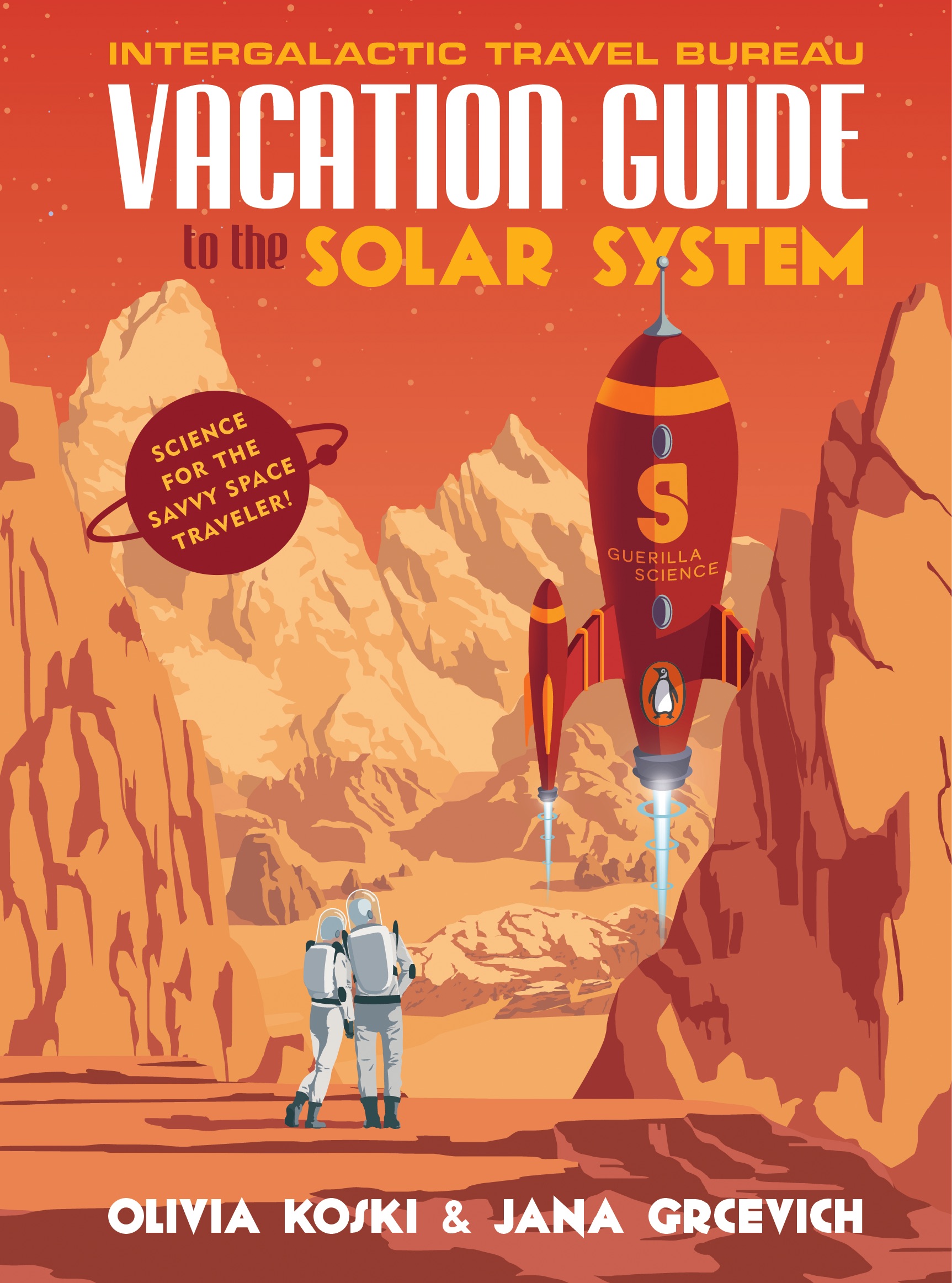
Olivia Koski and Jana Grcevich want to send everyone to space — on vacation.
In "Vacation Guide to the Solar System" (Penguin Books, 2017), the science writer and astronomer team up to take readers through the finer points of a future where a relaxing trip to float in the clouds of Venus is commonplace, and where daring travelers ski on Mercury or skydive on Saturn. Just remember to sign up for years of time off at work!
Space.com caught up with Koski and Grcevich about their new book, and discussed the Intergalactic Travel Bureau it sprung from and the best (and most dangerous) places to visit in the vacationer's solar system. [See more vivid art from "Vacation Guide to the Solar System" (Gallery)]
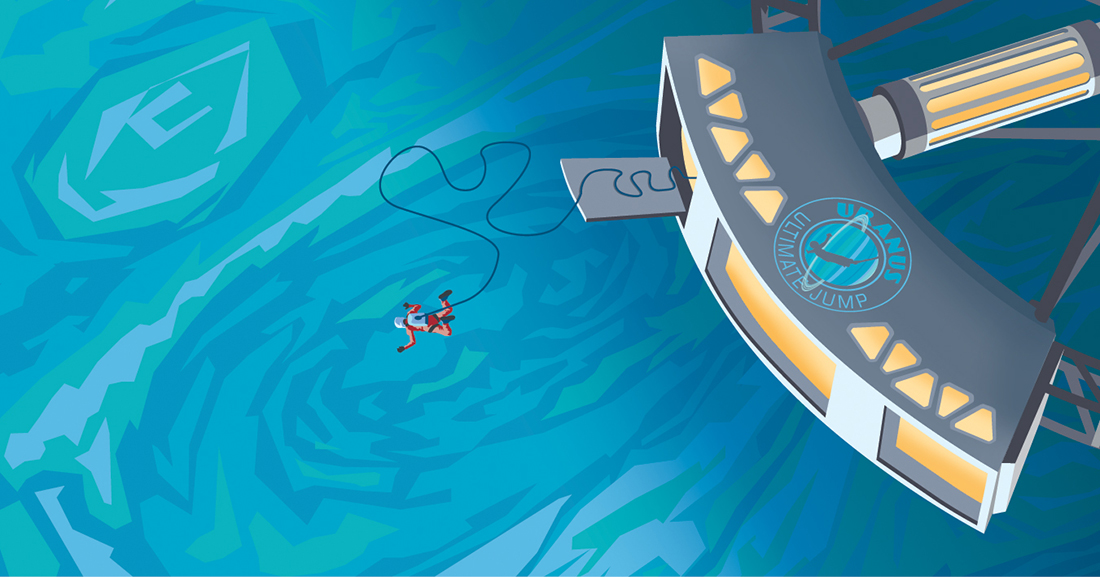
Space.com: So why a solar system vacation guide?
Olivia Koski: It all started with something called the Intergalactic Travel Bureau, a pop-up agency where the organization Guerilla Science invites members of the public to come and plan their vacation with an astronomer. Guerilla Science does all kinds of events and performances at festivals — all with the mission to imbue science into culture, so planning vacations to space was an idea that we had to make astronomy and space science relevant to the average person.
Guerilla Science had done this in London for the Royal Astronomers' Ball back in 2011, and then in 2012 we brought the Intergalactic Travel Bureau to New York, and recruited Jana as one of our first space travel agents.
Jana Grcevich: I was a graduate student in astronomy at the time, and that sounded like a lot of fun — and it was. It's very different from sitting at a computer all day long; I was finishing my thesis, hard at work alone in my room.
Get the Space.com Newsletter
Breaking space news, the latest updates on rocket launches, skywatching events and more!
It's like translating [science] in a way that's far more vivid and interesting. I kind of got caught up with it as well, in doing this — just thinking about what it would be like to go low-gravity hiking, or skiing on Pluto. There are so many different places where you can go and think about the human experience of being there.
Koski: As we started talking to people about what they want to do on vacation, we realized that there was definitely the need for a guide to vacationing in space … It just felt like doing the book would be a natural extension of the experience.
Space.com: What are the most fascinating real-life facts you incorporated into the travel guide?
Grcevich: I just am fascinated by everything that's going on, on Titan. If I could travel anywhere, I would definitely choose Titan, which is a moon of Saturn, because it has lakes. They're not water lakes, they're methane and ethane — very cold, 300 degrees below zero — but you could have a beach vacation there. It'd be very unlike a beach vacation on Earth, and it would be cloudy all the time because there's an orangish haze in the sky. It'd be very dark, because it's far from the sun, but the atmosphere there is very thick, and that's superunusual for a moon. It's so thick, in fact, you could probably become airborne pretty easily under human power or with minimal external power, so you could fly on Titan, and I think that'd be a fascinating experience.
And all along the equator, it has black dunes that are made out of this dark sand that's kind of the consistency of grape nuts — so I'm just imagining you're flying over Kraken Mare, which is this huge lake on Titan, or you're going over these dark, windswept dunes in this thick atmosphere … the human experience of that would be really fascinating. [How Humans Could Live on Saturn's Moon Titan (Infographic)]
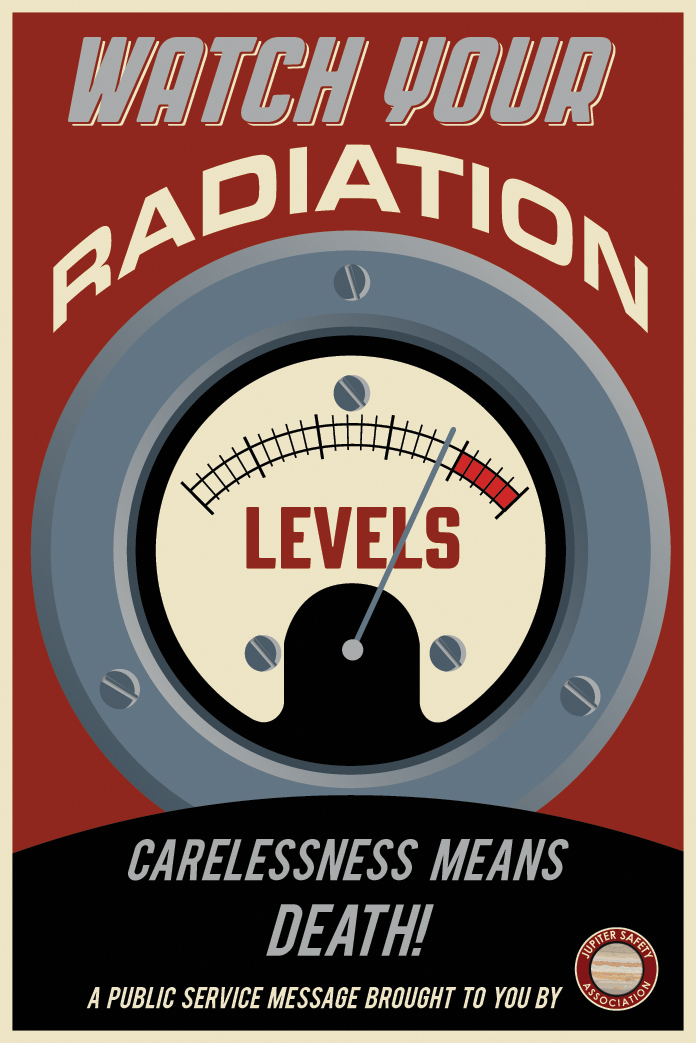
Koski: For me, if I could survive the radiation [I would] visit the Galilean moons of Jupiter. It just blows me away, the diversity of landscapes from one moon to the next. You have Io, which is this moon full of volcanoes — it's just this hellish landscape of fire and molten lava, and then Europa, which isn't that far away, is this ice moon that potentially has an ocean that harbors life underneath it. It's just …
Grcevich: We don't know if it harbors life, but it could.
Koski: But it could, who knows? There's definitely an ocean there underneath the ice, most likely.
Grcevich: A salty-water ocean.
Koski: I would love to go on a submarine tour and see what's there.
Space.com: How did you develop the infrastructure on all these planets and moons? Hoppers to get around, floating cities, wheeled submarines…
Grcevich: It depends. For example, in the upper atmosphere of Venus, conditions are surprisingly similar to Earth in terms of temperature and pressure, and you have to deal with some corrosive clouds, but for the most part, it's very similar to Earth. Scientists have been thinking about how you would send a mission to the upper atmosphere of Venus, and so there are published papers and NASA reports that do the basic calculations and analysis of how that would work.
There hasn't been a moon hopper [which maneuvers on the moon in large leaps], but it's something that has been thought out in terms of the basics of how it would work physically. In those cases, especially for the moon, Mars and Venus, there's something real to work with. For some of the more distant planets, because that's a little further in the future, it's more speculative. We did talk to scientists who have thought about airships in the atmospheres, for example, of the gas giant planets, [but that] is difficult because the atmosphere there is so light, it's hard to keep something afloat, but they've thought about the engineering that would be required for that.
Koski: It's pretty amazing, the scientific research that's out there, the conceptual research and reports that have been produced at NASA. They've been thinking about this stuff for decades, and coming up with pretty amazing concepts for traveling to different places and exploring them. I think virtually everything is based on either a report or conversation with a scientist that might have been speculative, but still within the realm of possibility. It was important to us that everything was rooted in some science or engineering reality, even if, as we mention in the book, we took some pretty significant liberties.
Probably the one where we really were speculating a lot was the surface of Venus. They've sent probes to the surface of Venus and taken pictures of the surface of Venus, but it's a pretty harsh environment, and things don't survive there for very long because the pressures are so high, the temperature is so high. We have a concept in the book for a submarine on wheels, which comes from our own imaginations.
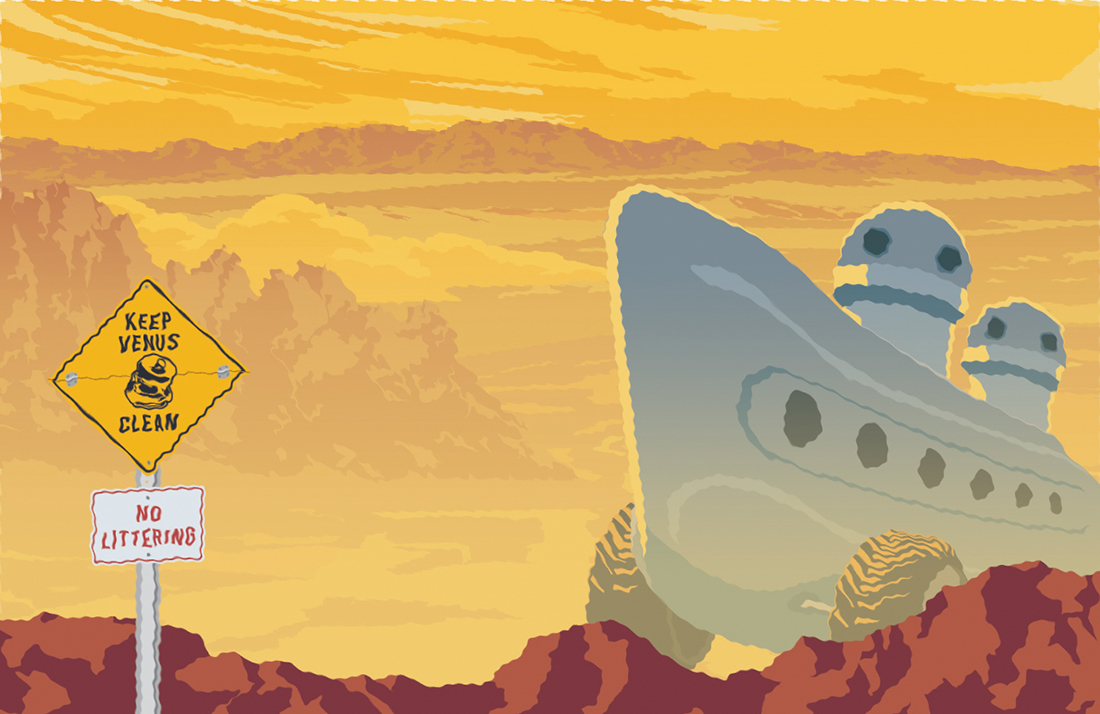
Grcevich: I would not travel in that; if somebody tried to tell me to go to the surface of Venus, I would not go. I also would not go to Mercury. There are a lot of places …
Koski: The moons of Jupiter — I'm pretty sure you would die pretty quickly of radiation poisoning, but you know ...
Space.com: I like that you were pretty real about that in the book — you don't want to go there for too long.
Koski: Yeah, you don't want to go to the surface of Venus for too long, even if you could. It's just really, really, really hot there, and the pressure is really high, and it's almost like you could probably handle one of those things — really high pressure or high temperatures — but both … I don't know.
Grcevich: Not even keeping a human alive, but keeping a robot functional on the surface is a huge ... I mean, we haven't done it yet. We sent something there, maybe it lasts 40 minutes, and then it dies a horrible death.
Koski: [Whereas for Venus' atmosphere,] the floating airships — there's been a lot of research into floating airships, which I think is great.
Grcevich: If you made a vessel with breathable air, it would float, because of the density of Venus' atmosphere even at those altitudes. There's winds, but they're not necessarily so turbulent that you can't imagine creating some sort of craft that would survive it, and the temperatures and pressures are very similar to Earth, as I mentioned. It would be corrosive, so that would be an engineering challenge, but … Before this, I had been, like, Why would anybody ever consider sending a human to Venus? — it sounds like a terrible idea. And it still sounds like a terrible idea, but at least there's kind of a vision of how that would work in theory.
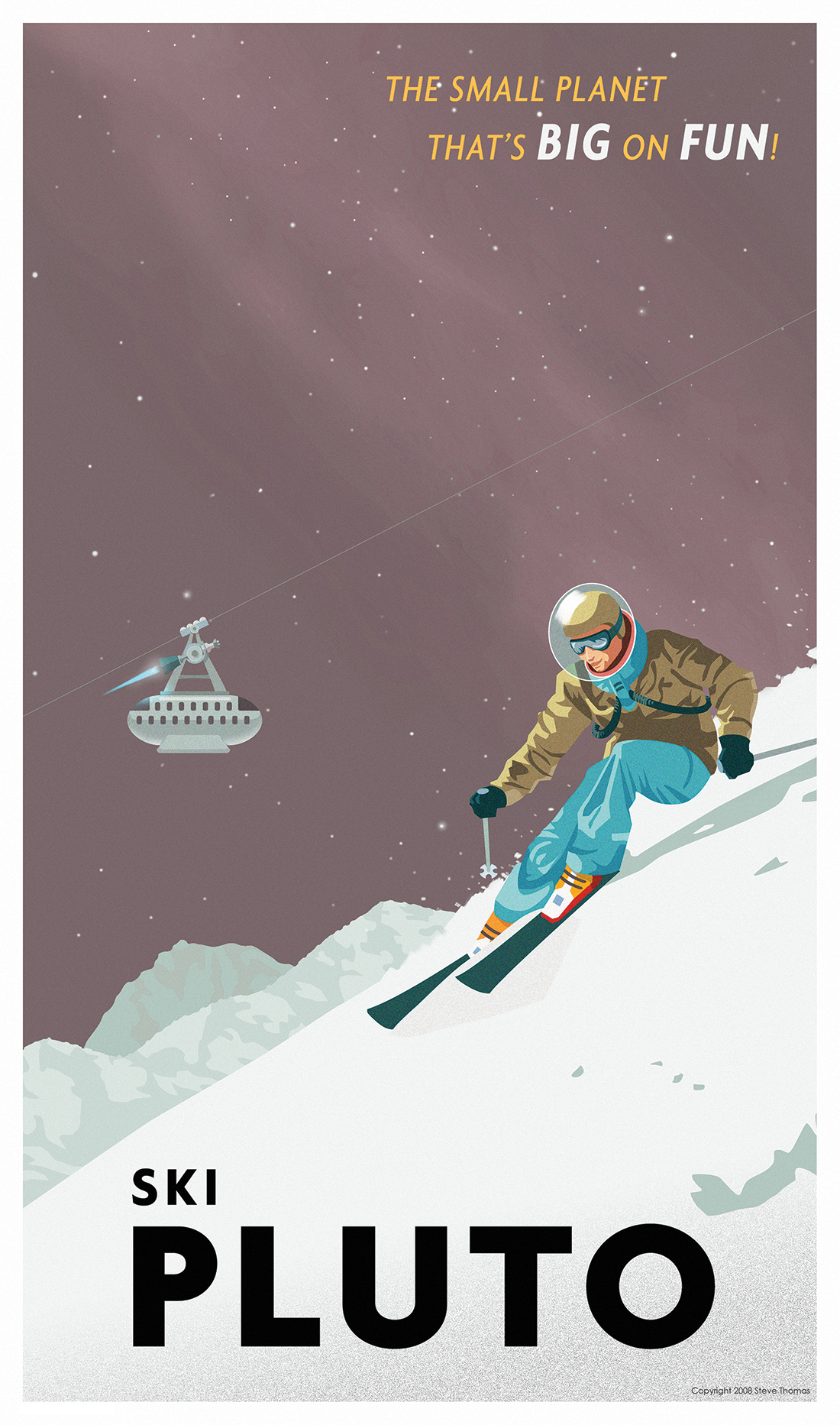
Space.com: Where would you recommend for first-time travelers?
Koski: Personally, I think the moon is a great choice because it's so close — you don't have to take a ton of time off work, and it's the most affordable, even if it's probably out of reach for most people. But there are people on planet Earth who can afford it, and who have actually purchased a ticket to the moon. That's pretty incredible, if you think about it.
We started this in 2011, and there was a lot of talk about suborbital space trips at the time. Of course, those keep getting delayed, but even this year, I think Richard Branson and Jeff Bezos both said [they're] going to do one by the end of 2018. It's on the horizon, and it's going to happen soon. Elon Musk sold a trip to the moon to some people. It's funny, because when we've been on the street saying, "Hey, can we offer you a trip to the moon? Want to go to the moon?" people laugh it off, but that is becoming a reality, and that's another aspect of it that is really enjoyable and really fascinating for people to talk about: Where the real meets the fiction.
Grcevich: It's a lot different to talk about going to Saturn's moons or things like that; that's not really in the near future for us. But over the course of doing this, one thing that really struck me was, coming across this image from 1919. It was an illustrated version of people going to space, and they were on biplanes. They were out in the open and there were clouds in space, and it talked about how long it would take to get to Neptune — it was thousands of years or something.
It took us 10 years to send a probe to Pluto, and it made me have a moment of realization that, yes, as a technical scientist, this doesn't seem like it's in the near future, but in the medium and the far future, things change on such a rapid scale that, provided we keep exploring space, people are going to be vacationing in space. It's worth imagining that future for ourselves as realistically as possible, because we can sit down and figure out what a human would experience, what it would feel like, what it would look like to be there — and someday humans will be there.
This interview has been edited for length. You can buy "Vacation Guide to the Solar System" on Amazon.com.
Email Sarah Lewin at slewin@space.com or follow her @SarahExplains. Follow us @Spacedotcom, Facebook and Google+. Original article on Space.com.
Join our Space Forums to keep talking space on the latest missions, night sky and more! And if you have a news tip, correction or comment, let us know at: community@space.com.

Sarah Lewin started writing for Space.com in June of 2015 as a Staff Writer and became Associate Editor in 2019 . Her work has been featured by Scientific American, IEEE Spectrum, Quanta Magazine, Wired, The Scientist, Science Friday and WGBH's Inside NOVA. Sarah has an MA from NYU's Science, Health and Environmental Reporting Program and an AB in mathematics from Brown University. When not writing, reading or thinking about space, Sarah enjoys musical theatre and mathematical papercraft. She is currently Assistant News Editor at Scientific American. You can follow her on Twitter @SarahExplains.









